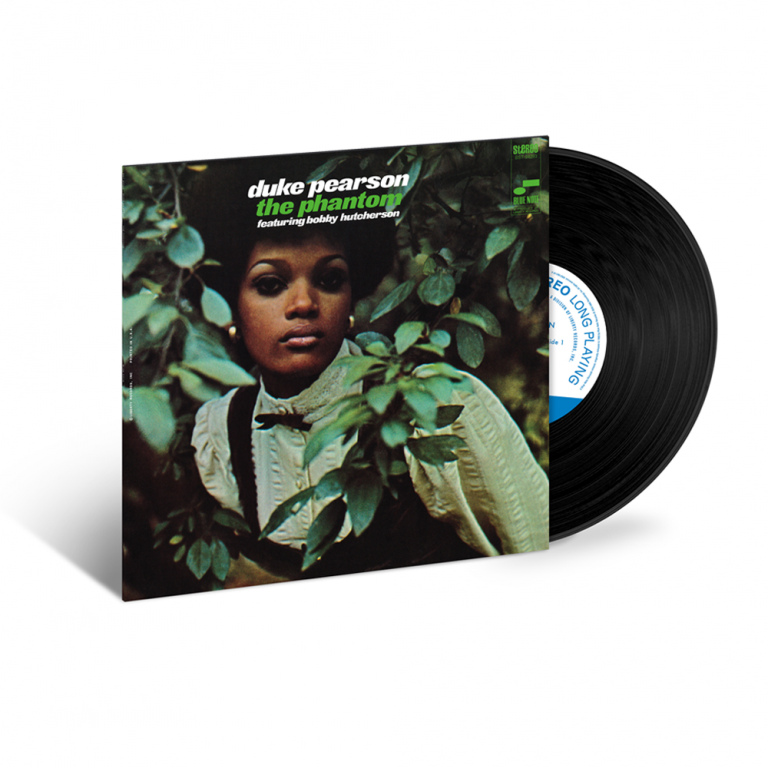When we think of the prime architects of the classic Blue Note sound, the first individuals to spring to mind are probably global superstars of jazz such as Herbie Hancock, Freddie Hubbard and Wayne Shorter. But look a little further behind the scenes and you’ll find other, perhaps less heralded heroes who were every bit as instrumental in forging the label’s identity. Greatest of all of these is Duke Pearson.

Born in Atlanta, Georgia in 1932, Pearson studied piano and trumpet and performed on both before, inspired and influenced by Wynton Kelly, settling on the piano. Moving to New York at the beginning of 1959, Pearson soon began playing with trumpeter Donald Byrd and it wasn’t long before Byrd began making use of Pearson’s considerable skills as a composer and arranger.
Byrd’s breakthrough 1963 jazz-meets-spirituals Blue Note date, “A New Perspective,” featured daring Pearson arrangements for septet plus eight-voice vocal choir, as well as two timeless Pearson compositions, “Chant” and the hit “Cristo Redentor.” 1963 was, in fact, a big year for Pearson, in which he cemented his relationship with Blue Note. Following the death of saxophonist Ike Quebec, he took over as the label’s A&R man, a position he held until 1971. He also began a fruitful tenure as producer, overseeing countless classic sessions by the biggest Blue Note stars and helping to consolidate the label’s quintessential hard bop sound.
Alongside all of this backroom work, Pearson also maintained a productive recording career, leading big-name bands and cutting a handful of adventurous sides for Blue Note including 1964’s “Wahoo” (with Byrd on trumpet), 1967’s “Sweet Honey Bee” (with Joe Henderson on tenor sax and Freddie Hubbard on trumpet) and 1968’s “The Right Touch” (with Hubbard and tenor man Stanley Turrentine). Unlike many of his contemporaries, Pearson largely avoided standards and reinterpretations, filling his albums with original compositions that showcased his rich harmonic imagination and knack for catchy yet intelligent hooks.
His 1968 album, “The Phantom,” stands as his towering achievement, featuring four Pearson originals and two covers, performed by a heavyweight ensemble including the first-call rhythm section of bassist Bob Cranshaw and drummer Mickey Roker, and the unusual frontline of Jerry Dodgion on flute and Bobby Hutcherson on vibraphone. Throughout, Pearson’s arrangements for flute and vibes create a light, ethereal feel quite distinct from muscular 60s hard bop, and on the breezy blues of Willie Wilson’s “Blues for Alvina” Pearson’s own piano playing reveals a delicate touch full of easy melodicism. “Say You’re Mine” reveals Pearson to be a composer of great skill and insight – a slow and melancholy blues built on a rolling piano figure that owes as much to Debussy as it does to Gershwin’s “Summertime,” on which he unveils his most dextrous and soulful playing.

There’s also a marked Latin influence across the album, evident in three tracks bolstered by the congas of Victor Pantoja and Carlos ‘Patato’ Valdés: “Bunda Amerela (Little Yellow Streetcar)” is a carefree, percussion-heavy jaunt; “Los Ojos Alegres (The Happy Eyes)” is a sultry bossa-nova as hummable as a daytime TV theme tune; and Dodgion’s “The Moana Surf” is a lilting lament with a Spanish-tinged intro for mellifluous flute and acoustic guitar.
But it’s the 10-minute opening title track that provides the date’s undoubted highlight. Cranshaw’s bluesy bass hook, Roker’s tumbling, timpani-like toms and cymbal splashes, and Valdés’ rattling guiro set up an irresistibly smouldering, down-tempo groove that seems to prefigure trip-hop by about 30 years. Dodgion’s flute introduces a mysterious melody, with Pearson’s deliciously insouciant ripples announcing a tune that is in no hurry but knows exactly where it’s going. Hutcherson takes a louche solo, followed by a spacious turn by Dodgion while the leader sits out, content to let his front-line do the work. With barely three chord changes throughout, it’s a minimal, moody, modal masterpiece. Jazz doesn’t get much deeper.
Read on…McCoy Tyner – Expanding, then Extending
Daniel Spicer is a Brighton-based writer, broadcaster and poet with bylines in The Wire, Jazzwise, Songlines and The Quietus. He’s the author of a book on Turkish psychedelic music and an anthology of articles from the Jazzwise archives.
Header image: Duke Pearson. Photo: Francis Wolff/Blue Note Records.




